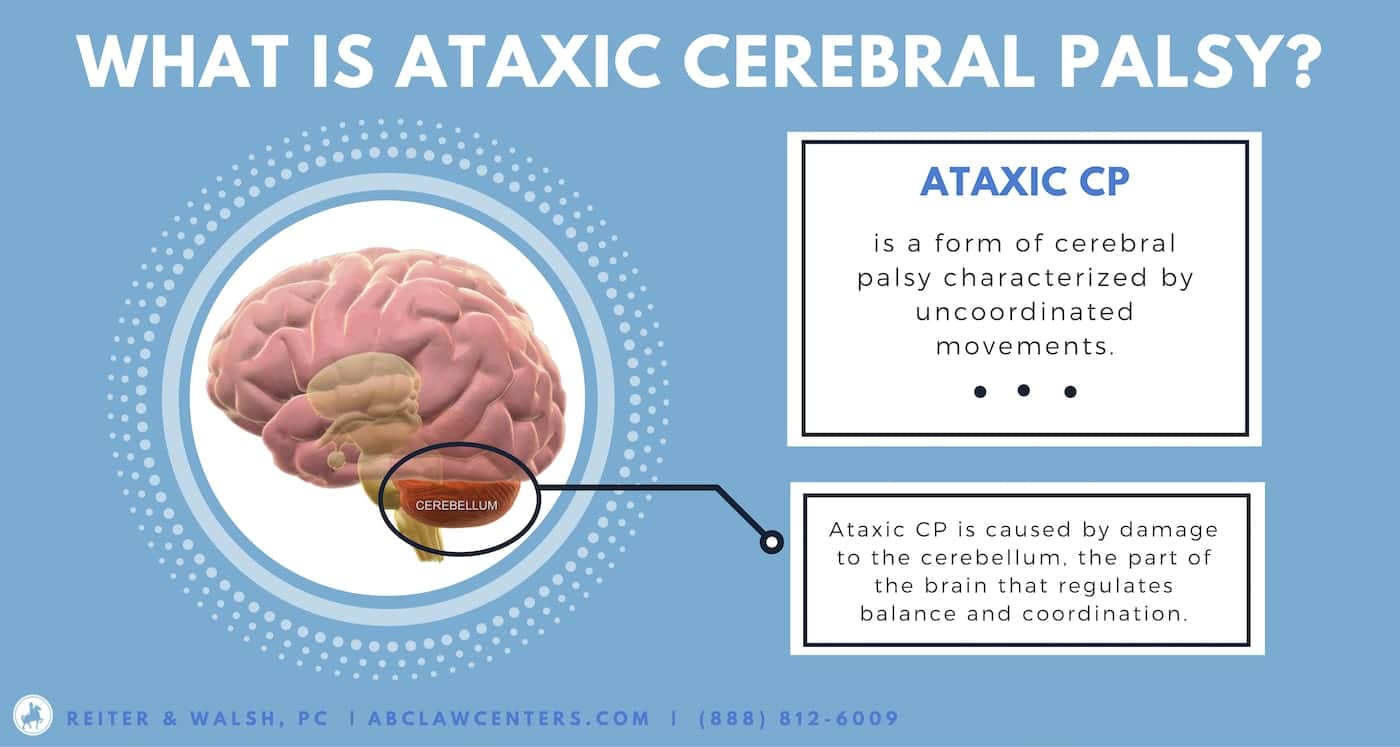Ataxic Cerebral Palsy
Ataxic cerebral palsy is a form of cerebral palsy characterized by uncoordinated movements. It is the least common form of cerebral palsy, affecting approximately 5-10% of children diagnosed with CP. Unlike the rare form of degenerative neurological disease ataxia, ataxic cerebral palsy is a non-progressive condition.
Causes of Ataxic Cerebral Palsy
Ataxic cerebral palsy is most commonly caused by birth injuries. This usually includes brain damage occurring at or near the time of birth, or in the neonatal period. Ataxic cerebral palsy develops in children who have sustained injury to the cerebellum, which is part of the brain that regulates balance and coordination.

Signs and Symptoms of Ataxic Cerebral Palsy
Children with ataxic cerebral palsy may have problems with coordination, balance, gait, and fine motor control. Their movement may appear clumsy, repetitive, or jerky, and they may struggle to understand their body position in relation to objects around them. Most people with ataxic cerebral palsy are able to walk, but may do so unsteadily and with an abnormally wide gait. Fine motor control issues may manifest as difficulty with activities like writing or using dining utensils. It is common for children with ataxic cerebral palsy to have difficulty with visual processing (depth perception and eye movement control) and/or auditory processing. In some cases, ataxic cerebral palsy also causes speech, language, and learning disabilities.
Diagnosis and Treatment of Ataxic Cerebral Palsy
Like other forms of cerebral palsy, ataxic cerebral palsy may not be diagnosed until symptoms become apparent, which will occur once the child begins to show developmental delays. Ataxic cerebral palsy is usually recognized later than spastic and dyskinetic forms of cerebral palsy, at about 18 months of age or after. Diagnosis can be confirmed using clinical assessments and imaging tests such as a CT scan, MRI, or ultrasound. Even before cerebral palsy is diagnosed, however, certain interventions may be warranted. If an infant has been deprived of oxygen around the time of birth, they should be given hypothermia therapy. If administered within six hours of the insult, it may be very effective in minimizing long-term damage, and may even prevent or minimize cerebral palsy. Once cerebral palsy has set in, it is not curable. However, there are a variety of treatments, surgeries, and therapies that may lessen symptom severity for people with both ataxic cerebral palsy and other types.


Trusted Legal Help for Your Cerebral Palsy Case
Dealing with a birth injury diagnosis can be difficult, but our attorneys can help. Call us when you’re ready.
Featured Videos
Posterior Position
Hypoxic-Ischemic Encephalopathy (HIE)

Featured Testimonial
What Our
Clients Say…
After the traumatic birth of my son, I was left confused, afraid, and seeking answers. We needed someone we could trust and depend on. ABC Law Centers: Birth Injury Lawyers was just that.
- Michael


